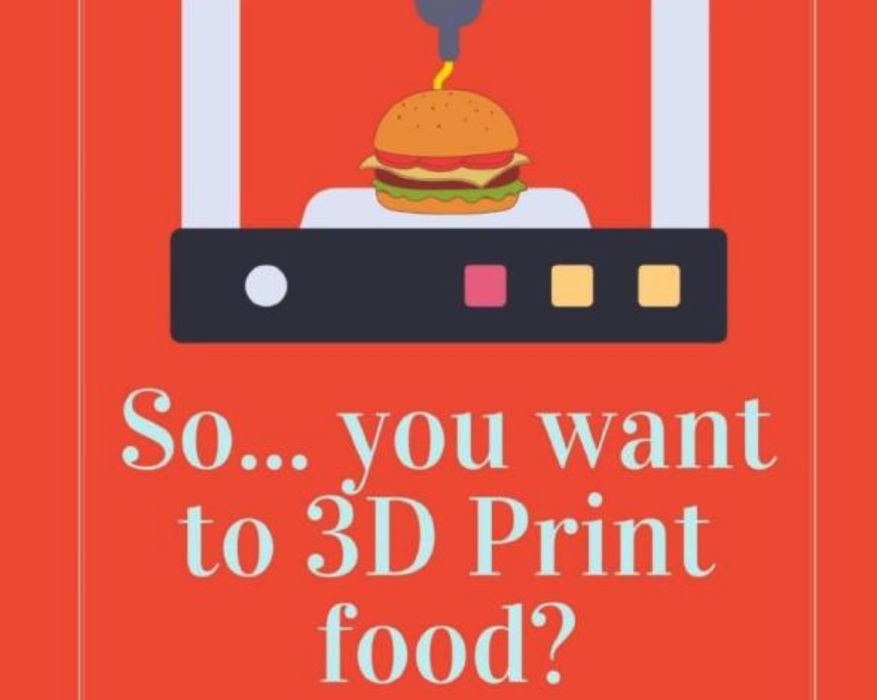
This week’s selection is “So… You Want To 3D Print Food?” by Michah Bailey.
3D printing is almost always associated with the production of solid mechanical parts, but it is also used for producing biological structures, and even more rarely to 3D print edible food items.
The technology for doing so has been experimented with for well over a decade. I recall seeing primitive food printers in 2013, and even have a chocolate print of the Fabbaloo logo somewhere around here. It’s not new.
For various reasons, 3D printing food has yet to take off commercially. Attempts have been made to develop “kitchen” 3D printers capable of producing edible items, but all seem to have faded out.
The reasons are several, including the fact that 3D printing is quite slow: no one wants to wait an hour for a simple food print. As a result most of the few successes seem to be in commercial kitchens where prints can be prepared in advance for an order.
This book explores the technology of food printing in several dimensions.
It begins, as most books on 3D printing do, with a basic explanation of the technology. However, there is a focus on food printing tech. A case study of a chocolate 3D printing operation is described, one of the few areas where food printing has succeeded.
There is a description of pizza printing, a topic that was explored several years ago. In fact, we published a story about BeeHex, a startup attempting to develop a Pizza printer. Bailey discusses different ways to automate food printing activities, which are typically required due to the combination of ingredients for dishes.
Food can be 3D printed using several 3D printing processes. Bailey describes the types of foods that can be printed along with pros and cons for inkjet, FFF/paste, PBF and binder jet technologies. Each of these have wildly different characteristics, and thus are appropriate only for certain food types.
In the final chapter, Bailey discusses the likely future of food printing, including aspects of sustainability, where bioreactor-generated meat can be produced with little effect on the environment, the use of insects as food material, or how 3D printed food could have an important role in the future of long-duration space travel.
If you are interested in the technology of food 3D printing, this could be a book worth purchasing.
We’re an Amazon Associate and earn a small fee from qualifying purchases. Help support our 3D print news service by checking out this book!
Via Amazon
